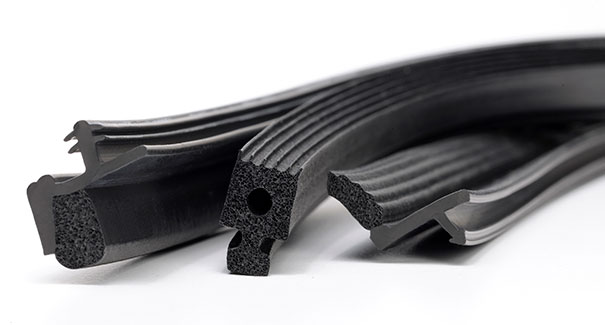Open-Cell vs Closed-Cell Sponge Rubber

A key benefit of closed-cell sponge rubber is its ability to resist water absorption. Here's a closer look at how it works.
Sponge rubber is extruded using a gas-forming ingredient (blowing agent) in the rubber formulation. As the rubber passes through heating zones in the cure system, it reaches a temperature where the blowing agent decomposes and gas bubbles form, creating individual cell structures in the rubber.
Cooper Standard specializes in closed-cell sponge rubber products. This material consists of enclosed cells independent from other cells, each with its own structure. Closed-cell rubber doesn't let fluids seep in and stays afloat in water. Open-cell rubber has distinctive cells that are open and interconnected to neighboring cells. This lets air and moisture seep in easily, giving the rubber an absorbent quality. Both open-cell and closed-cell products offer superior compression qualities when compared to a dense material.
Contact our engineers to review your project today.